Collection in Motion. Wilhelm Wagenfeld, Adolf Luther, early Video Art and more!15 Rooms, 15 Stories–Kaiser Wilhelm Museum
One of the highlights of the year is an exhibition of everyday objects designed by Wilhelm Wagenfeld (1900–1990). Whether it's the famous table lamp he designed while still at the Bauhaus in Weimar or the heat-resistant glass household products he developed with Jenaer Glaswerke: with his designs characterized by functionality and timeless design, Wagenfeld is one of the most important product designers of the 20th century. In connection with a purchase that significantly strengthens the design collection of the Kunstmuseen Krefeld, a room in the Collection in Motion is dedicated to him on the occasion of his 125th birthday.
The cabinet exhibition The Artist as Alchemist places the idea of transformation at its core. Since antiquity, alchemy has linked experiment, craft, and spirituality—and continues to inspire art today. Sigmar Polke, Yves Klein, and Joseph Beuys make energy, change, and mental processes visible in their works: Klein strives for immaterial art, Beuys explores the connection between matter and spirit, and Polke investigates colour as a living, reactive substance. The presentation is part of the international project Sigmar Polke. Athanor NOW of the Anna Polke Foundation (running through 2026).
The new presentation titled Showing Attitude focuses on the human body as a vehicle for emotion, posture, and societal ideals. It spans the arc from the classical ideal body of the late 18th and 19th centuries to the ruptures of early Modernism around 1900, when artists explored new, everyday, and more essentialised representations. Developed in cooperation with the Education Department of the Kunstmuseen Krefeld, the exhibition offers school classes and preschool groups accessible, hands-on entry points to the depiction of the body.
The section on early video art highlights the emergence of the medium in the 1960s, when portable cameras opened new avenues for artistic practice. Pioneers Gerry Schum and Ursula Wevers played a key role, bringing contemporary art directly into people’s living rooms through television exhibitions such as LAND ART (1969) and IDENTIFICATION (1970). Their videogalerie schum, founded in 1971, became one of the world’s first galleries dedicated to video art. At the KWM, one of their video works will be presented each month over the course of a year—beginning with LAND ART and followed by productions featuring artists such as Baldessari, Dibbets, Gilbert & George, and Serra.
As of now another room presents a cooperation with the Adolf Luther Foundation. The new presentation Color and Transparency focuses on Luther's characteristic concave mirror objects—compositions of square, concave, and convex mirrors in silver and blue that make the light in the room tangible. They are complemented by an early “dematerialization” from 1961: an impasto blue color sculpture in a rotating metal frame that clearly references the monochrome works of Yves Klein. Luther used glass and mirrors to develop the unmistakable signatures of his artistic work. In 1985, together with jewelry designer Susanne Dünne, he also designed a collection consisting of a ring, necklace, brooch, and watch. The elements of his concave mirror objects are incorporated into these pieces of jewelry.
Convolutes of the collection of objects of non-European origin is being presented for the first time. These are primarily arts and crafts from Africa, Oceania and South East and East Asia, which came to the Kaiser Wilhelm Museum between 1891 and 1930 and were intended to serve as inspiration for local artistic and industrial production. The provenance and cultural contexts of the objects were investigated in an extensive project funded by the Deutsches Zentrum Kulturgutverluste. The presentation introduces the objects and tells the story of their provenance.
The Kunstmuseen Krefeld are expanding their collection with a donation from the Düsseldorf jewelry designer and visual artist Linda Müller. Her works enter into an extraordinary dialog with historical Art Nouveau objects from the museum's founding period around 1900. The KWM's historical collection includes works by the Danish silversmith Georg Jensen, who opened his own workshop in Copenhagen in 1904 and quickly became one of the leading Art Nouveau jewelry designers. His floral and ornamental designs bear witness to the precision of his craftsmanship, his artistic flair and the close connection between art and nature. This chapter is supplemented by so-called katagami - Japanese coloring stencils from the 19th century. Their filigree workmanship and aesthetic effect inspired numerous European artists and had a lasting influence on the formal language of Art Nouveau.
In 2020, the Kunstmuseen Krefeld launched a new concept for the presentation of its collection that introduces the extensive holdings in a dynamic, varied way and with diverse themes. Under the title Collection in Motion, 15 stories line up like a string of pearls in the 15 rooms on the second floor of the Kaiser Wilhelm Museum. Again and again, a new room emerges, and sculptures, paintings, photography and design objects come together to form other surprising stories. Other rooms are thematically dedicated to, among others, Pop Art.
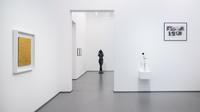
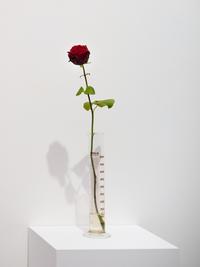
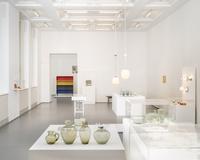
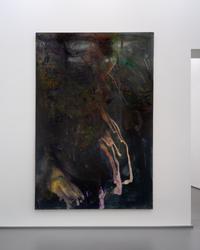
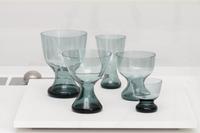
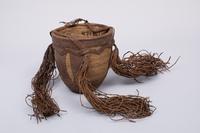
Sudan, 21 × 20 cm
Sammlung Kunstmuseen Krefeld
Photo: Kunstmuseen Krefeld / Dirk Rose

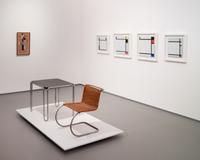
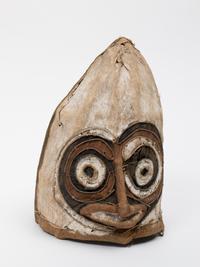
Englisch-Neuguinea, 34 × 26 cm
Sammlung Kunstmuseen Krefeld
Photo: Kunstmuseen Krefeld / Dirk Rose
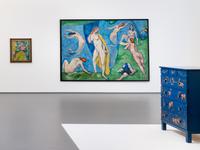

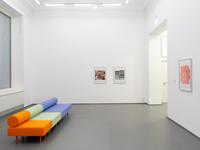
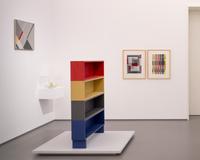
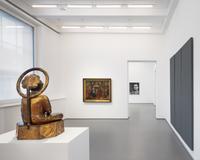

100 Vasen, Kunstmuseen Krefeld, Installationsansicht im Kaiser Wilhelm Museum, 2023
Foto: Kunstmuseen Krefeld / Dirk Rose


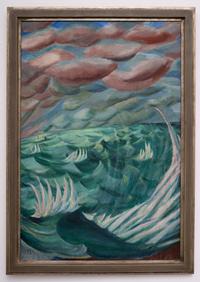
Erich Heckel, Installationsansicht im Kaiser Wilhelm Museum, Kunstmuseen Krefeld, 2023
© VG Bild-Kunst, Bonn, 2023, Foto: Kunstmuseen Krefeld / Dirk Rose

Erich Heckel, Installationsansicht im Kaiser Wilhelm Museum, Kunstmuseen Krefeld, 2023
© VG Bild-Kunst, Bonn, 2023, Foto: Kunstmuseen Krefeld / Dirk Rose
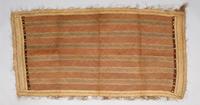
Tansania, 103 × 197 cm
Sammlung Kunstmuseen Krefeld
Photo: Kunstmuseen Krefeld / Dirk Rose
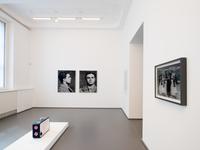
Installationsansicht im KWM mit Werken von u.a. Andy Warhol und Gerhard Richter
© VG Bild-Kunst, Bonn, 2023 / © Gerhard Richter, Foto: Kunstmuseen Krefeld / Dirk Rose
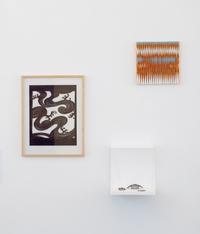

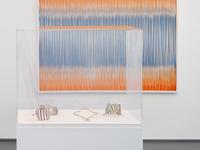
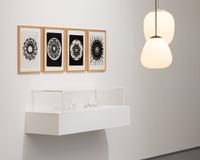
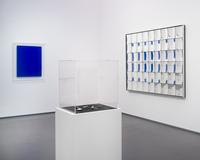
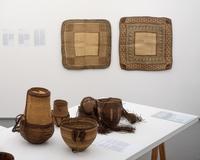
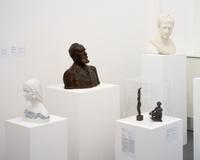
Exhibitions currently on view
- Charlotte Perriand: L’Art d’habiter / The Art of Dwelling
- Collection in Motion. Wilhelm Wagenfeld, Adolf Luther, early Video Art and more!
Past related programme
- Guided tour
Zwischen den Jahren: Wünsch dir was in Sammlung in BewegungMore–Kaiser Wilhelm MuseumFührung mit Thomas Müller
Kosten: Museumseintritt zzgl. 2 EuroZwischen den Jahren heißt es bei den Kunstmuseen Krefeld: Wünsch dir was in Sammlung in Bewegung. In 15 Räumen, die von mittelalterlichen Kunstwerken bis zur Moderne reichen, können Besucher:innen selbst entscheiden, welche Gemälde sie näher erklärt bekommen möchten. Von Derick Baegert bis zu Mondrian, Erich Heckel, Christo oder Campendonk – die Auswahl liegt ganz bei Ihnen! Eine wunderbare Gelegenheit, die Feiertage mit inspirierenden Momenten ausklingeln zu lassen.
- Guided tour
Sammlung in BewegungCampendonk bis RichterMore–Kaiser Wilhelm MuseumFührung mit Sabine Sander-Fell
Kosten: Museumseintritt zzgl. 2 Euro- Guided tour
Sammlung in BewegungMuseumseintritt zzgl. 2 EuroMore–Kaiser Wilhelm MuseumEintauchen in die Vielfalt von Kunst und Design, das machen die Räume in Sammlung in Bewegung möglich. Im November eröffnet im KWM ein neuer Raum, der sich den spannenden Hintergründen der Restaurierung des Gemäldes Die heilige Sippe aus der Zeit um 1500 widmet. Seit 1897 sammeln die Kunstmuseen Krefeld Werke aus ihren Ausstellungen und Projekten. Heute umfasst die Sammlung über 20.000 Werke und bietet ein faszinierendes Spektrum, das sowohl in ferne Länder und Kulturen entführt als auch hiesige Entwicklungen und Diskurse in Kunst, Design und Architektur beleuchtet.
- Guided tour
Sammlung in BewegungMuseumseintritt zzgl. 2 €MoreKaiser Wilhelm Museum- Guided tour
Schätze der SammlungMoreKaiser Wilhelm Museum